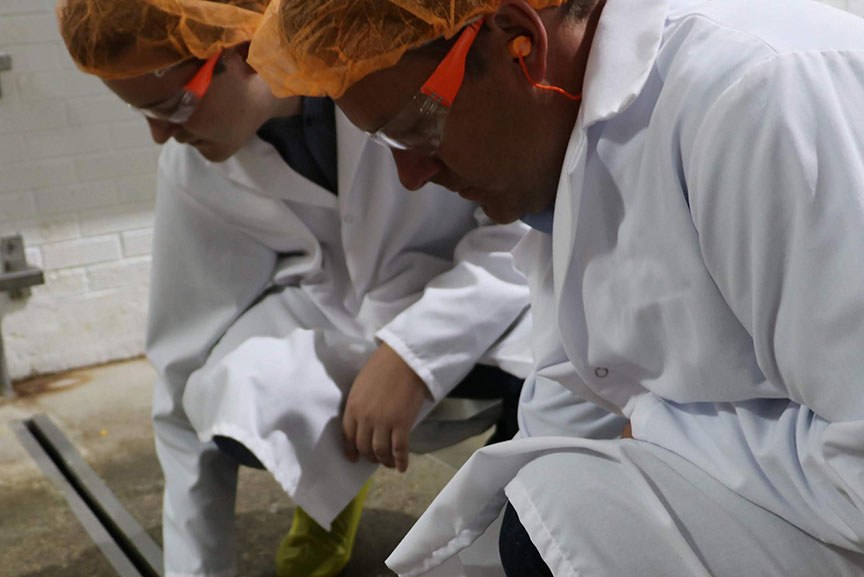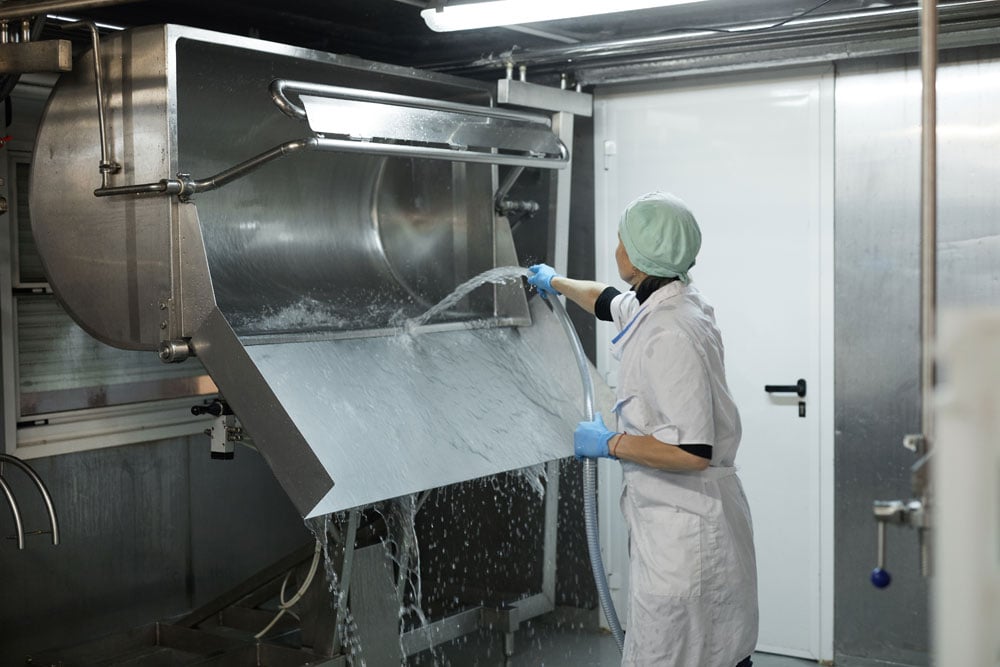Creating safer food for consumption is not just about better food sources; it’s also about cleaner, more sanitary food processing plants. Food plant sanitation is a crucial part of creating and preparing food products that are safe for human consumption.
The FDA and USDA have set strict standards that plant managers and operators must follow, and some of these requirements are continually changing and evolving to maintain public safety.
To ensure the most sanitary food processing plant possible, facility owners and managers should take these seven steps into account.
1. DON'T OVERLOOK THE LOCATION
For the initial planning of a food plant, you need to consider the location carefully. Labor, ingredients, and transportation are three vital resources that a food plant needs to have nearby.
Ease of access is critical for employees, materials, and vendors. If your ingredients and supplies are locally sourced, for instance, in addition to having fresh products, you are helping the local economy.
Transportation costs to deliver your product to stores or distributors also needs to be part of the planning process, as it has a direct effect on your operating costs.
The location of a plant also plays a vital role in ensuring proper sanitation. A plant should never be close to construction sites, landfills, chemical or raw sewage plants, or other areas that can easily lead to contamination.
2. CONSIDER YOUR SETUP
A proper equipment and processing layout ensures safety and efficiency, minimizes the risk of cross-contamination, and protects the production space from contamination.
Including a sanitation room for employees to go through before starting work, as well as bathrooms that don't open towards the workspace, are ways to make sure that the production area is established in an appropriate flow from the start to the end of production.
3. CLEAR AWAY DIRT, DUST, AND DEBRIS
Dirt, dust, and other debris aren't just harmful to the equipment in a food facility; they also settle on products, clothing, and other surfaces, contaminating products. Bacteria can cling on to these particles, increasing the risks of food-borne illnesses.
Cleaning is critical to keep dirt, dust, and other debris out of the facility and maintain food plant sanitation. Workers should also change their shoes in the sanitation room or wear durable shoe covers to prevent dirt and dust from being brought in.
Air purifiers are another essential part of maintaining a clean, dust-free facility.
4. CHOOSE THE RIGHT DRAINAGE

Drainage is vital to sanitation in food plants, since it keeps wastewater runoff from accumulating on the facility's floors. Standing water can be a breeding place for bacteria, which can cause serious contamination issues.
FoodSafe Drains offers different drainage systems that are ideal for food plants. One system is the 10,000 Series Slot Drain — a linear, grate-free system made from NSF-certified, food-grade stainless steel.
With a heavy-duty load class, the 10,000 Series Slot Drain can withstand forklift traffic, and it offers clean-in-place capabilities, which makes the system easy to clean and sanitize without much hassle.
5. INVEST IN QUALITY EQUIPMENT
No facility can function without high-quality equipment; the better the quality, the more durable it is, and the longer it will last. Ideally, all equipment should be stainless steel, a bacteria- and corrosion-resistant metal that can withstand the harsh environment found in a food plant.
6. WORK WITH PEST CONTROL
Flies, rats, and other pests can bring in dirt and bacteria, leading to widespread contamination in the facility, compromising sanitation levels. These pests can cause severe damage to the facility, from the walls to the equipment. Once an infestation has begun, it can be difficult to stop, which is why preventing them is essential.
To prevent infestations, seal any cracks or openings, no matter how small, to prevent entry. You also want to install mesh around any vents in the ceiling to prevent rodents or birds from getting inside. Keeping the facility clean is also critical — keep floors and surfaces free from waste and clean off any residue that may attract pests.
You should keep food containers tightly sealed and, of course, have regular pest control evaluations to ensure there is nothing of concern.
7. USE PROPER FOOD STORAGE
Food storage is critical to keeping ingredients and products fresh. Without proper storage, ingredients can be exposed to pests, bacteria, and other harmful environmental factors, which can affect the sanitation in food plants.
Using airtight containers and storing ingredients at the appropriate temperature is absolutely critical. Raw products like meat, fish, and poultry should stay in cold storage and be separate from other ingredients to prevent cross-contamination.
You need to clean all food storage containers before refilling them. Finished food products waiting for transport to stores and producers should have a separate storage area, away from raw ingredients, to keep them clean and uncontaminated.
BETTER SANITATION, BETTER PRODUCTS
Food plant sanitation is essential and required by law for a food plant to function. Sanitation regulations are constantly evolving as new information comes to light.
The seven steps above are just some of the critical steps to take in order to maintain the proper sanitation within your facility and set you up for success. It will also ensure that as changes to the standards occur, your food plant will be set up to implement them faster.
Questions?
For highly effective drainage solutions for your entire facility, contact a FoodSafe Drains expert today.


